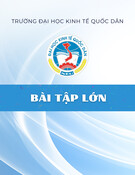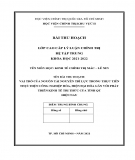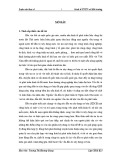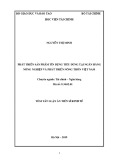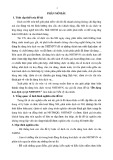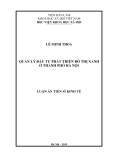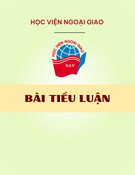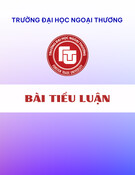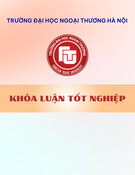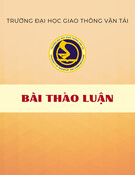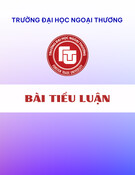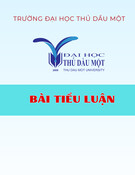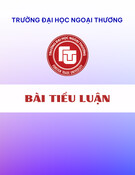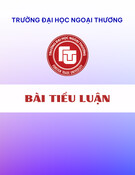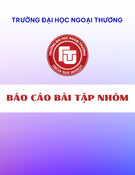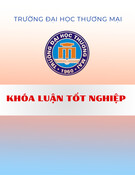
DA NANG UNIVERSITY OF ECONOMICS
FACULTY OF INTERNATIONAL BUSINESS
SPECIAL TOPIC
RESEARCH THE FOREIGN DIRECT INVESTMENT OF SOUTH KOREA
TO VIETNAM IN RECENT YEARS
STUDENT: H TH VUIỒ Ị
CLASS: 42K01.5
` LECTURER: NGUY N ANH TU NỄ Ấ
DA NANG 2019

Contents
2

LIST OF TABLES
3

RESEARCH THE FOREIGN DIRECT INVESTMENT OF SOUTH KOREA
TO VIETNAM IN RECENT YEARS
INTRODUCTION
Necessity of the topic
Foreign direct investment is now taking place on a global scale with increasing
volume and pace of rotation. In addition to promoting domestic resources, taking
advantage of foreign direct investment is considered as a smart to shorten the time of
initial capital accumulation, creating a solid premise for economic development,
especially for developing countries. Therefore, FDI is considered as the "golden key"
to open the door of prosperity for nations. In recent years, the number of countries
investing in Vietnam has been increasing, especially Korea. This in addition to
creating favorable conditions for the country's development such as creating jobs for
workers, increasing investment capital for facilities ... also causes many disadvantages
and damages to the economy in the long term. Therefore, the purpose of the study is
to find out the impact foreign direct investment into Vietnam.
Research objectives:
To research the Korean direct investment activities in Vietnam in the recent years
Research tasks:
Firstly, clarify and deepen the importance of FDI in Vietnam.
Secondly, clearly state the status and impact of Korea's FDI in Vietnam.
Thirdly, propose some solutions to effectively use FDI capital and attract foreign
capital.
Research object:
The situation of Korean FDI inflows into Vietnam.
Space: from the perspective of the state
4

Time: study with data series from 2010-2018
Research Methods :
Methods of data collection: journals, statistics, surveys, ..
Statistical methods, statistical analysis
Topic structure:
In addition to the preamble, table of contents, list of references, there are also the
following chapters:
CHAPTER 1: OVERVIEW
CHAPTER 2: OVERVIEW OF THE FOREIGN DIRECT INVESTMENT FLOWS
INTO VIETNAM
CHAPTER 3: SITUATION OF SOUTH KOREAN FOREIGN DIRECT
INVESTMENT INTO VIETNAM
CHAPTER 4: PROPOSALS TO ATTRACT MORE FDI CAPPITAL TO VIETNAM
5

